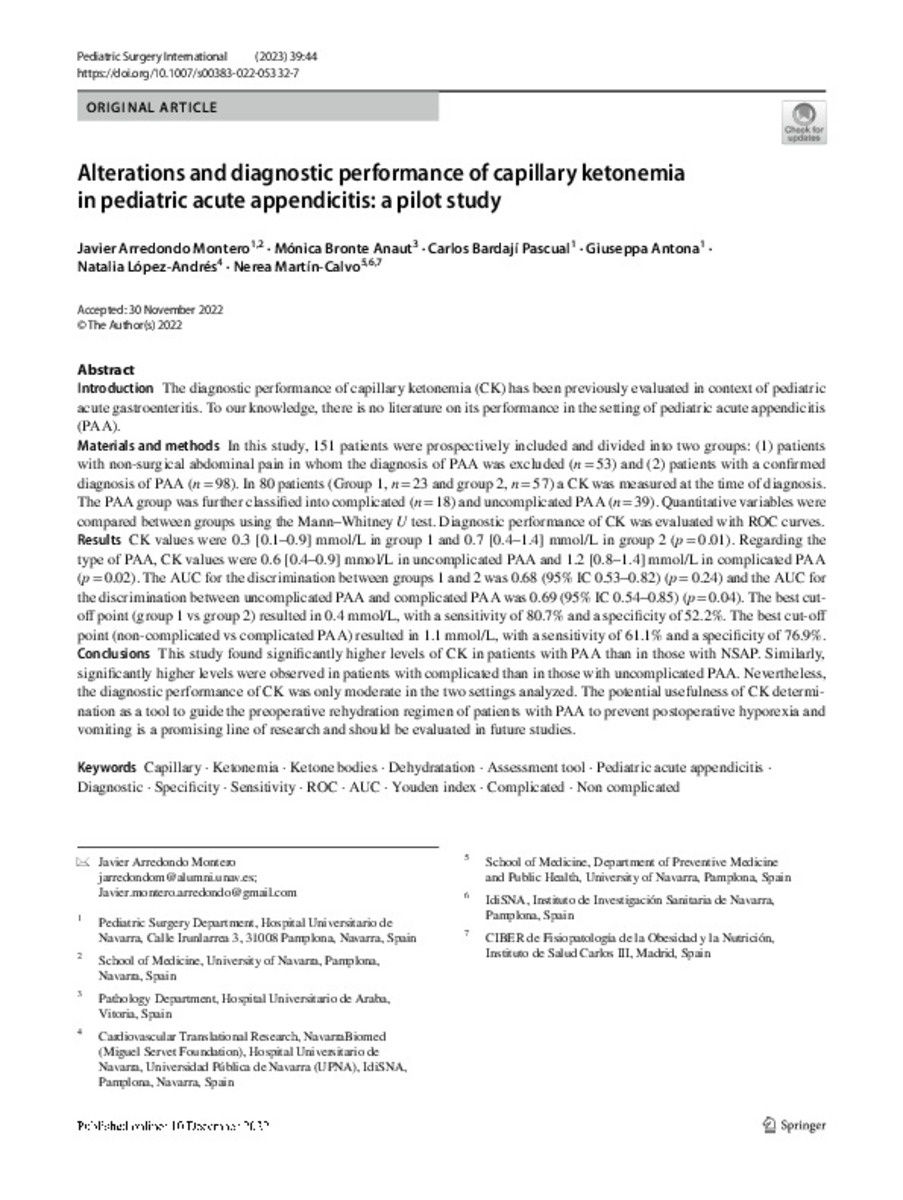Alterations and diagnostic performance of capillary ketonemia in pediatric acute appendicitis: a pilot study
Keywords:
AUC
Assessment tool
Capillary
Complicated
Dehydratation
Diagnostic
Ketone bodies
Ketonemia
Non complicated
Pediatric acute appendicitis
ROC
Sensitivity
Specificity
Youden index
Note:
This article is licensed under a Creative Commons Attribution 4.0 International License
Citation:
Arredondo-Montero, J. (Javier); Bronte-Anaut, M. (Mónica); Bardají-Pascual, C. (Carlos); et al. "Alterations and diagnostic performance of capillary ketonemia in pediatric acute appendicitis: a pilot study". Pediatric Surgery International. 39 (44), 2022,
Statistics and impact
0 citas en

0 citas en

Items in Dadun are protected by copyright, with all rights reserved, unless otherwise indicated.







